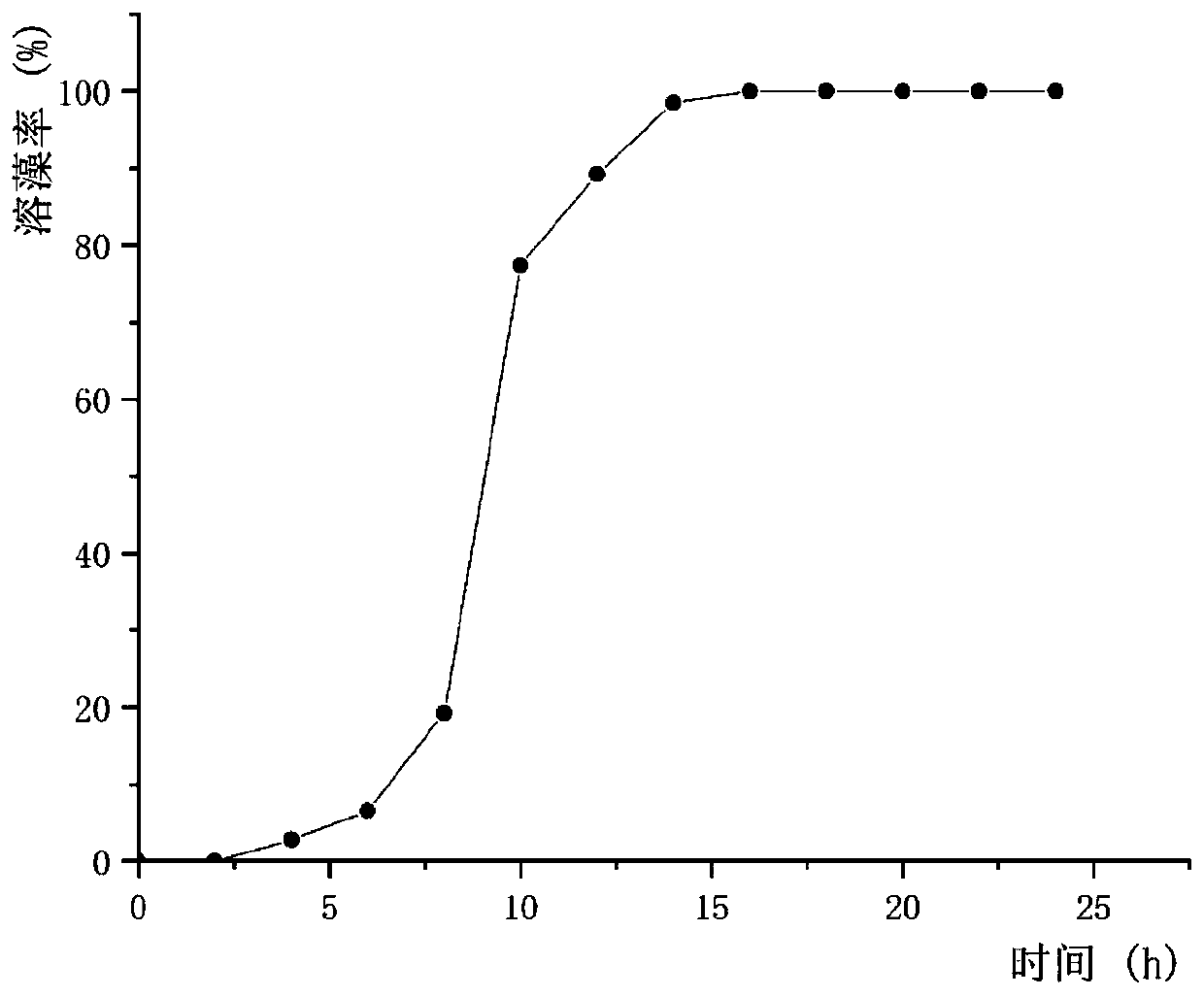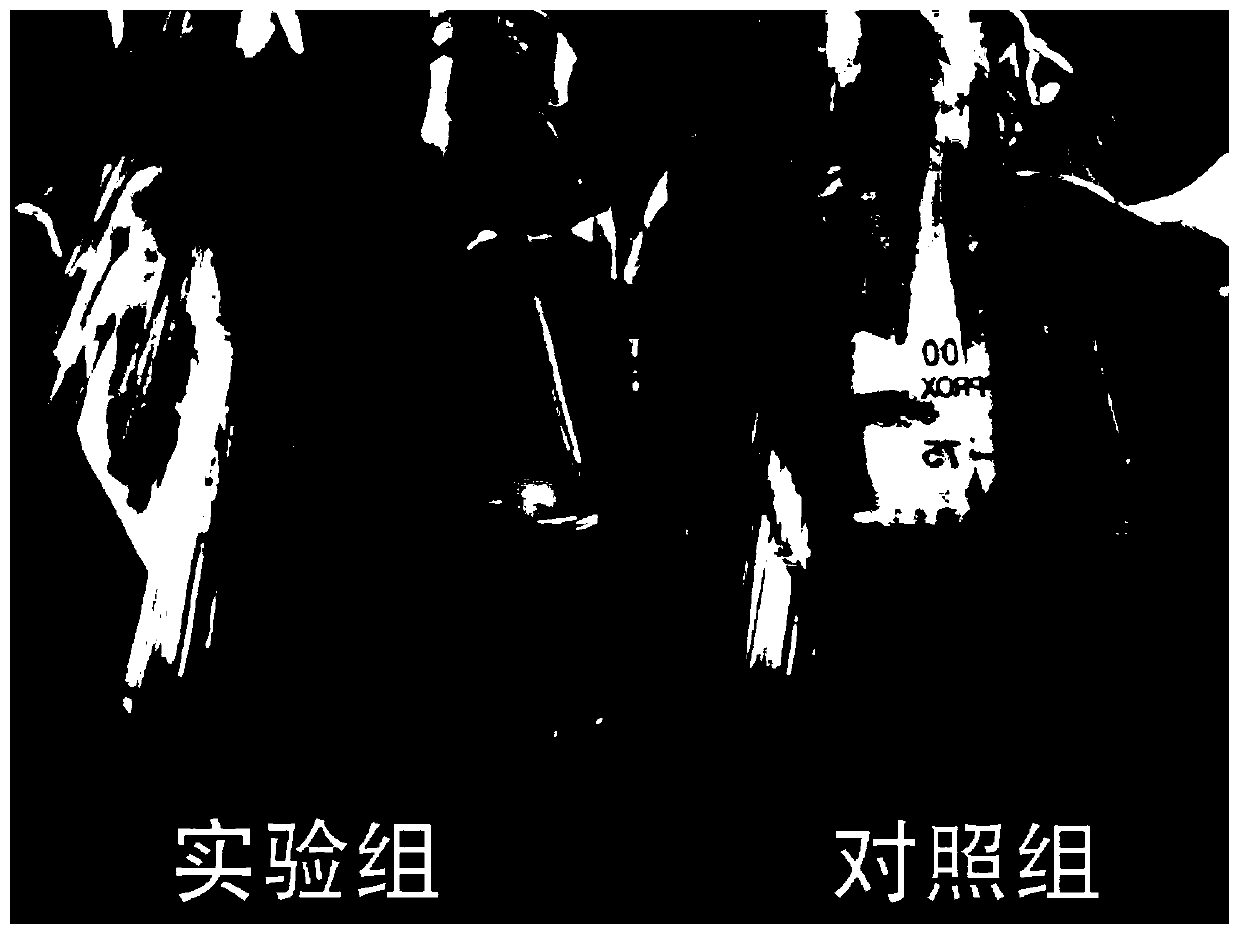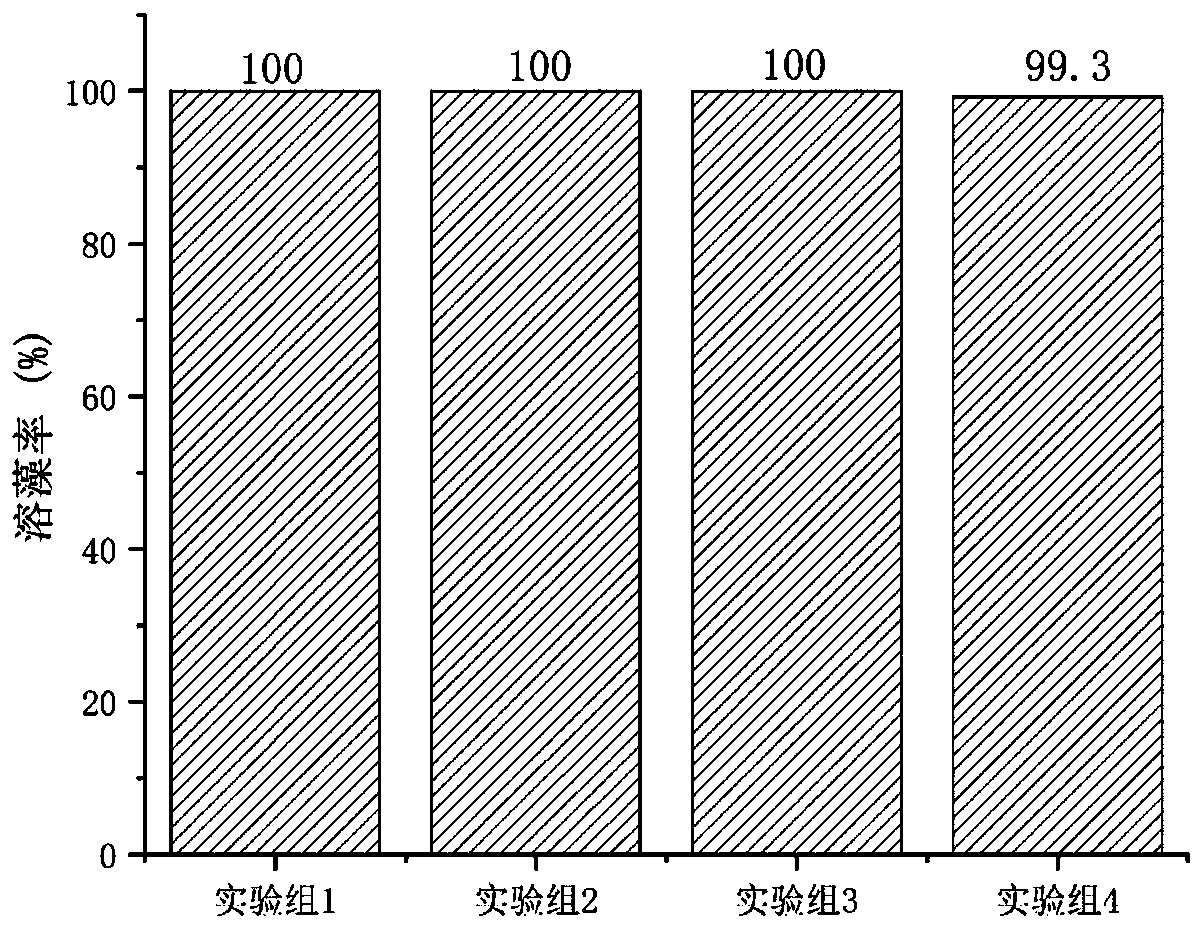Klebsiella sp. and application thereof
A technology of Klebsiella, cgmccno.18075, applied in the direction of bacteria, biological water/sewage treatment, microorganisms, etc., can solve the problems that cannot be well satisfied with fast, effective, and cheap removal of harmful algae, and achieve thorough The effect of killing algae cells
- Summary
- Abstract
- Description
- Claims
- Application Information
AI Technical Summary
Problems solved by technology
Method used
Image
Examples
Embodiment 1
[0041] 1. Strain isolation
[0042] (1) Collect water samples from Jingyue Lake, where algal blooms bloom in summer on the Songjiang Campus of Donghua University. Collect water samples and save them in sterile Erlenmeyer flasks, place the Erlenmeyer flasks in an incubator filled with ice cubes, and immediately transfer them to a sterile laboratory for colony enrichment culture.
[0043] (2) The above-mentioned collected water samples were passed through 10 -1 ,10 -2 ,10 -3 ,10 -4 ,10 -5 Five gradient dilutions were made. After dilution, the solutions were respectively spread on the aseptic plate medium of Microcystis aeruginosa under aseptic conditions, and placed in a 37°C incubator for enrichment culture. After 24 hours of culture, a single colony was obtained.
[0044] (3) Observe the shape of the grown colony, pick a single colony with an inoculation loop, and separate it by streaking on a sterilized LB solid medium plate. Repeat the separation and purification for 5...
Embodiment 2
[0053] Algae-dissolving test of Klebsiella sp. DHU-S1 on Microcystis aeruginosa
[0054] The specific implementation is as follows:
[0055] 1. Inoculate the strain DHU-S1 obtained above into 100mL inorganic salt liquid medium, and cultivate to the logarithmic phase;
[0056] 2. Culture Microcystis aeruginosa (Microcystis aeruginosa) FACHB905 in sterile BG11 medium and cultivate to the logarithmic phase; Microcystis aeruginosa culture conditions: in a constant temperature light incubator at 25°C, light: dark cycle ratio = 12h : 12h.
[0057] 3. Take the above Klebsiella sp. (Klebsiella sp.) DHU-S1 bacterium liquid cultured to the logarithmic phase, add it to the algae liquid of Microcystis aeruginosa cultured to the logarithmic phase at a volume fraction of 10%, and place it in 25 ℃ light incubator, with light: dark cycle ratio 12h: 12h co-cultivation. Another microcystis aeruginosa liquid added with the same volume fraction of inorganic salt medium (MSM) was taken as the c...
Embodiment 3
[0061] Effect of initial algae concentration on algicidal efficiency of Klebsiella sp. DHU-S1.
[0062] The specific implementation is as follows:
[0063] 1. Inoculate Klebsiella DHU-S1 in 100mL inorganic salt liquid medium and cultivate to the logarithmic phase;
[0064] 2. Add different amounts of Microcystis aeruginosa cultured to the logarithmic phase into sterile BG11 medium to obtain four groups of Microcystis aeruginosa liquids with different algae cell concentrations, each with three replicates. Experimental group 1 concentration: 1×10 5 CFU / mL. Experimental group 2 concentration: 1×10 6 CFU / mL. Experimental group 3 concentration: 1×10 7 CFU / mL. Experimental group 4: 1×10 8 CFU / mL.
[0065] 3. Take the bacterium liquid of Klebsiella sp. DHU-S1 cultivated to the logarithmic phase, and add it to the aeruginosa of experimental group 1, experimental group 2, experimental group 3, and experimental group 4 with a volume fraction of 10%. Microcystis algal liquid. A...
PUM
 Login to View More
Login to View More Abstract
Description
Claims
Application Information
 Login to View More
Login to View More - R&D
- Intellectual Property
- Life Sciences
- Materials
- Tech Scout
- Unparalleled Data Quality
- Higher Quality Content
- 60% Fewer Hallucinations
Browse by: Latest US Patents, China's latest patents, Technical Efficacy Thesaurus, Application Domain, Technology Topic, Popular Technical Reports.
© 2025 PatSnap. All rights reserved.Legal|Privacy policy|Modern Slavery Act Transparency Statement|Sitemap|About US| Contact US: help@patsnap.com



